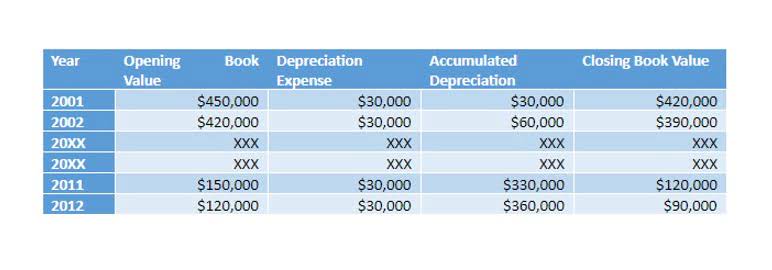The accounting rate of return is an internal rate of return (IRR) based on accounting assumptions. And it can be useful to compare the profitability of investments with different uses. The ARR provides a corporation with a quick overview of the earning potential of a certain investment. Accounting rate of return (also known as simple rate of return) is the ratio of estimated accounting profit of a project to the average investment made in the project.
- Breaking down the total figure helps a company identify which customer segments contribute the most to its ARR.
- Let’s say an investor is considering a five-year investment with an initial cash outlay of $50,000, but the investment doesn’t yield any revenue until the fourth and fifth years.
- As well as to assist in making acquisition or average investment decisions.
- In terms of decision making, if the ARR is equal to or greater than a company’s required rate of return, the project is acceptable because the company will earn at least the required rate of return.
- An example is the assumed rate of inflation and cost of capital rather than economic assumptions.
Most gyms will upsell you on yearly passes knowing full well that most people don’t stay consistent after a month. So they take advantage of new year’s day, and offer a significant discount. Even though the contract value is lessened on paper, it actually increases in services used v services paid for. To calculate ARR on a quarterly basis, you would substitute “quarter” for “period.” If you want to make a good decision, you need to know how each of these rates of return are calculated and how they differ from each other.
What is the difference between ARR and MRR?
However, the formula does not take into consideration the cash flows of an investment or project, the overall timeline of return, and other costs, which help determine the true value of an investment or project. The accounting rate of return is the average rate at which all cash flows of a project get discounted for their time value. This can be calculated by adding the interest rate of the company, the cost of capital, and the expected inflation rate. Annual recurring revenue (ARR) refers to revenue, normalized on an annual basis, that a company expects to receive from its customers for providing them with products or services. Essentially, annual recurring revenue is a metric of predictable and recurring revenue generated by customers within a year. The measure is primarily used by businesses operating on a subscription-based model.
This SaaS metric is important for subscription businesses because it provides a more accurate picture of the company’s recurring revenue than monthly recurring revenue (MRR) does. Every business tries to save money and further invest to generate more money and establish/sustain business growth. ARR for projections will give you an idea of how well your project has done or is going to do. Calculating the accounting rate of return conventionally is a tiring task so using a calculator is preferred to manual estimation. If you choose to complete manual calculations to calculate the ARR it is important to pay attention to detail and keep your calculations accurate.
The prospective success of an investment or purchase for a company is determined using the accounting rate of return calculation, or ARR. The ARR is a tool that enables an organization to assess whether a significant equipment purchase, an acquisition of another company, or another significant business investment is a financial win for the company. An ARR offline accounting software freeware of 10% for example means that the investment would generate an average of 10% annual accounting profit over the investment period based on the average investment. The time value of money is the main concept of the discounted cash flow model, which better determines the value of an investment as it seeks to determine the present value of future cash flows.
The main difference between ARR and IRR is that IRR is a discounted cash flow formula while ARR is a non-discounted cash flow formula. A non-discounted cash flow formula does not take into consideration the present value of future cash flows that will be generated by an asset or project. In this regard, ARR does not include the time value of money whereby the value of a dollar is worth more today than tomorrow because it can be invested. The accounting rate of return is a capital budgeting metric that’s useful if you want to calculate an investment’s profitability quickly.
ARR – Example 2
To calculate ARR, you take the net income, then divide by initial investment. Conceptually, the ARR metric can be thought of as the annualized MRR of subscription-based businesses. Since ARR represents the revenue expected to repeat into the future, the metric is most useful for tracking trends and predicting growth, as well as for identifying the strengths (or weaknesses) of the company.
All such information is provided solely for convenience purposes only and all users thereof should be guided accordingly. In order to properly calculate the metric, one-time fees such as set-up fees, professional service (or consulting) fees, and installation costs must be excluded, since they are one-time/non-recurring. Taken into account within ARR is the revenue from subscriptions and expansion revenue (e.g. upgrades), as well as the deductions related to canceled subscriptions and account downgrades. To calculate CARR on a quarterly basis, you would substitute “quarter” for “period.”
How to calculate ARR
It will generate a total of $150,000 in additional net profits over a period of 10 years. After that time, it will be at the end of its useful life and have $10,000 in salvage (or residual) value. Accounting Rate of Return, shortly referred to as ARR, is the percentage of average accounting profit earned from an investment in comparison with the average accounting value of investment over the period. The accounting rate of return (ARR) is an indicator of the performance or profitability of an investment. The annual recurring revenue (ARR) reflects only the recurring revenue component of a company’s total revenue, which is indicative of the long-term viability of a SaaS company’s business model.
Accounting rate of return is a method for identifying whether an expensive equipment purchase, merger, or other major business investment would be worth the cost. The discount rate is the average of the rates of return on investment for the past three years or the average rates of return on investment during the same period for https://www.wave-accounting.net/ similar but less risky investments. In accounting, there are various ways to measure the rate of return on investment. Each method uses different variables and may give varying results for a given set of facts. The only difference between the two metrics is the period of time at which they are normalized (year vs. month).
The accounting rate of return (ARR) is a formula that reflects the percentage rate of return expected on an investment or asset, compared to the initial investment’s cost. The ARR formula divides an asset’s average revenue by the company’s initial investment to derive the ratio or return that one may expect over the lifetime of an asset or project. ARR does not consider the time value of money or cash flows, which can be an integral part of maintaining a business. The accounting rate of return (ARR) is a simple formula that allows investors and managers to determine the profitability of an asset or project. Because of its ease of use and determination of profitability, it is a handy tool in making decisions.
Components of ARR
This formula can be used to calculate CARR on a monthly, quarterly, or annual basis.To calculate CARR on a monthly basis, you would simply substitute “month” for “period” in the formula. Monthly recurring revenue (MRR) is a measure of all the recurring revenue that a company expects to receive over the course of a month. For example, if a company expects to receive $1,000 in recurring revenue per month, their ARR would be $12,000 (1,000 x 12). In other words, ARR is the total amount of revenue a company expects to receive from customers who have committed to renewing their subscriptions at the same rate for another year. The ARR can be used by businesses to make decisions on their capital investments. It can help a business define if it has enough cash, loans or assets to keep the day to day operations going or to improve/add facilities to eventually become more profitable.
Thus, ARR provides a long-term view of a company’s progress, while MRR is suitable for identifying its short-term evolvement. Accounting rate of return is also sometimes called the simple rate of return or the average rate of return. Accounting rate of return can be used to screen individual projects, but it is not well-suited to comparing investment opportunities.
Whether it’s a new project pitched by your team, a real estate investment, a piece of jewelry or an antique artifact, whatever you have invested in must turn out profitable to you. Every investment one makes is generally expected to bring some kind of return, and the accounting rate of return can be defined as the measure to ascertain the profits we make on our investments. If the ARR is positive (equals or is more than the required rate of return) for a certain project it indicates profitability, if it’s less, you can reject a project for it may attract loss on investment.
For example, if a company expects to receive $3,000 in recurring revenue per quarter, their ARR would be $12,000 (3,000 x 4). The rate of return is one of the most important factors when making investment decisions. It is important to understand the difference between accounting rate of return and financial rate of return. The metric is commonly referred to as a baseline, and it can be easily incorporated into more complex calculations to project the company’s future revenues. Unlike total revenue, which considers all of a company’s cash inflows, ARR evaluates only the revenue obtained from subscriptions. Thus, ARR enables a company to identify whether its subscription model is successful or not.





